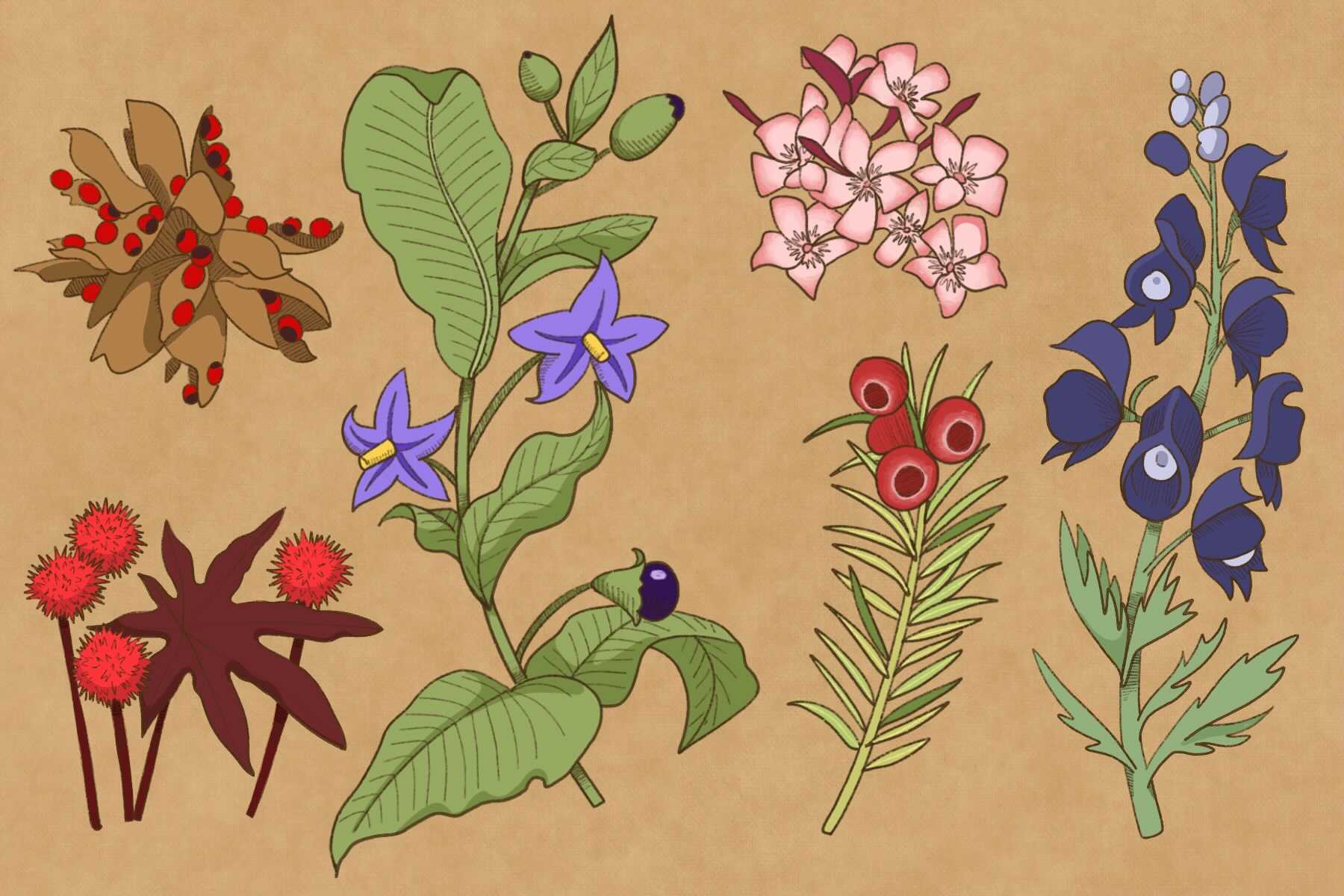Both flora and fauna have found some pretty interesting ways to defend themselves from predation. Many use defense mechanisms such as camouflage and mimicry, while others bank on their hard shells or sharp spines, but one of the most interesting ways life forms have evolved to protect themselves is by using poison. Let’s explore eight poisonous animals and plants from around the world.
1. Pufferfish
These spiny fish live in tropical and subtropical ocean waters. Almost all pufferfish contain tetrodotoxin, a potent poison found mainly in their liver, skin and reproductive organs. Tetrodotoxin can cause paralysis of the muscles in the body. Although the meat of some pufferfish species is eaten worldwide, it can be fatal if prepared incorrectly. This is why it is safer when prepared by professionals; nationwide rules in Japan dictate pufferfish can only be cooked by licensed chefs to prevent accidental deaths. Just one pufferfish has enough toxin to kill 30 adult humans — and there is no known antidote.
2. Poison Dart Frogs
These bright-colored amphibians are native to Central and South America. Just small amounts of the batrachotoxin found in their skin can be deadly. This toxin attacks the nervous system, causing convulsions, contractions and death. In fact, Native Indian tribes used to rub the tips of their blow darts on the backs of these frogs so they could kill game animals efficiently. At first, the bright colors on poison dart frogs might appear to be a disadvantage because it makes them stand out to predators; however, their bright skin actually makes it clear to predators to stay away. The small creatures never had to evolve to disguise themselves to survive, which says something about the danger level they pose to other animals and humans.
3. Hooded Pitohui
Hooded pitohuis are native to New Guinea and are one of the few known toxic birds. A neurotoxin called homobatrachotoxin is found in its skin and feathers. In high doses, the toxin can cause paralysis, cardiac arrest and death. In humans, touching the bird can cause numbness and tingling, but in smaller animals, the reaction can be more harmful. Research shows the adaptation can protect the bird against parasites such as lice and other predators. The poison is thought to come from the bird’s diet of melyrid beetles, which contain high levels of batrachotoxins.
4. Tiger Keelback Snake
Tiger keelback snakes mostly live in East Asia and are both poisonous and venomous — a rare combination for snakes. The two glands on their neck, or their nuchal glands, contain bufadienolides. Exposure to these toxins can cause burning pain and blurred or compromised vision if there’s contact with the eyes, though fatalities are rare, as antivenom and treatment options are available. Tiger keelback snakes rack up their toxins by consuming poisonous toads.
There’s even evidence that tiger keelback snakes are aware of how toxic they are, as they exhibit assertive behavior when they’re armed with poison and submissive behavior when they aren’t. However, the snakes have venomous fangs that are located inconveniently in the back of their mouth, which makes it difficult to get a good bite in, especially in larger enemies, which is why they typically rely on their poison secretion to ward off assailants.
5. Water Hemlock
Animals are not the only organisms that use poison as a defensive tool — poisonous plants can be just as deadly, if not more so. Water hemlock has been deemed “the most violently toxic plant in North America.” They are typically found near wet meadows and along stream banks. The wetland plant contains a deadly toxin called cicutoxin, particularly in its roots, which acts as a central nervous system stimulant. When eaten by humans or grazing animals, the plant’s toxin can cause painful convulsions, rapid heart rate, seizures and death. Though many humans have been affected by water hemlock over the centuries, unknowing livestock who graze on it are the plant’s true victims, with deaths occurring in as little as 15 minutes — hence the reason it is also called “Cowbane.”
6. White Snakeroot
White snakeroot is a poisonous, white-flowered herb found in eastern and central America that contains a toxic alcohol known as trematol. When animals graze on white snakeroot, the trematol can cause them to tremble and poison the milk they produce. When ingested by humans, symptoms of milk poisoning can include nausea, loss of appetite, reddened tongue, abnormal acidity of the blood and death. White snakeroot was actually responsible for the death of Nancy Hanks, Abraham Lincoln’s mother. She didn’t eat the plant, but unknowingly consumed the milk from a cow who grazed on it. Now, farmers are well aware of this poisonous plant and make efforts to remove them from animal pastures.
7. Tobacco
Although tobacco is widely grown and sold commercially around the world, it is still considered a poisonous plant that can be fatal when eaten. Even just handling the plant can cause nausea, dizziness, confusion, headaches and vomiting. There are many chemicals found in tobacco, one of which is the infamous nicotine. Nicotine is not only addictive but is also a neurotoxin that can change how the brain processes emotions and can negatively impact impulse control, especially when ingested as a teen. Tobacco causes millions of deaths every year, rendering it one of the deadliest plants in the world.
8. Castor Bean
While the processed seeds are used to produce commercial castor oil, castor beans contain the deadly poison ricin. Ricin inhibits the synthesis of proteins within cells and can cause seizures, severe vomiting, organ failure and death. Because of its high toxicity, just ingesting or inhaling a few grains of it can be deadly; it only takes about eight beans to kill an adult human. Ricin was even featured in AMC’s “Breaking Bad” when the show’s main characters used the beans to poison people. Ricin is a slow-acting poison, meaning it can take a full day for symptoms to even show up. When it does, death can occur in just three days.
There certainly are some scary consequences for crossing paths with poisonous animals and plants. But it is important to remember that these life forms only developed these adaptations as a means to defend themselves against threats. We can best defend ourselves against these floras and faunas by learning about them, avoiding threatening them and — ultimately — staying away from them.
















